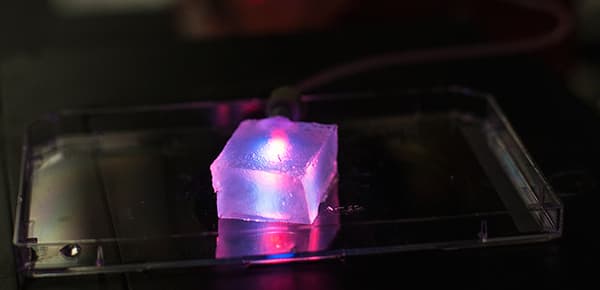Cotton Candy Machines Prove To Be Instrumental In Developing Artificial Organs
Leon Bellan and his team from the Vanderbilt University have artificially created full-scale organs from cotton candy machines. The mechanical engineering department is in the process of revolutionizing the printing technology by bringing about major transformations and upgradations. The goal was to use the machine to design fibre networks that can be used as templates to produce capillary systems that support organs such as the Liver and the Kidney.
According to Leon, this ‘crazy’ method can outline microfluidic networks that imitate the 3D capillary system in the human body and support cells for more than a week. As a contemporary tissue engineering researcher, Bellan is concentrating on hydrogel technology to incorporate scaffolds in artificial organs. Hydrogel, a hydrophilic network of polymer chains can copy the extracellular matrix that surrounds cells in the body.
Unlike solid polymers, it allows oxygen, nutrients and wastes present in close proximity with the source to pass through too. In order to eventually exhibit a complete system with multiple artificial organs working in sync, the team needed to develop a network as the connecting medium.

Three-dimensional slab of gelatin that contains a microvascular network
Primarily, there are two methods that researchers use to create artificial capillary systems: bottom-up and top-down. In the first technique, cells are cultured in the first step and then micro-networks are permitted to be built on system. Though the system consists of simple mechanisms, it takes a huge time to develop the network. For this reason, Leon chose the top down approach. He reported that the cotton candy spinning method can develop channels ranging from 3 to 55 microns, having a mean diameter of 35 microns.
Inspired by his earlier work involving an electro-spinning process, the novel cotton candy machine idea suddenly appeared in his mind. However, the whole process was pretty complex and in the need of a breakthrough discovery such as that of PNIPAM, Poly (N-isopropyl acrylamide) possessing the unique property of being insoluble at a temperature more than 32 degrees Celsius.
In the lab, researchers first developed a PNIPAM network using a machine similar to a cotton candy machine, followed by preparing a solution of gelatin in water (a liquid at 37 degrees), where human cells were mixed. Later, the warm mixture was layered over the PNIPAM and synthesized into a gel at 37 degrees Celsius. Finally, the cooled mixture was attached to a pump grown in a cell culture media with necessary elements.

Microvascular network perfused with liquid
Bellan explain that their future prospect lied in making a cost effective tool box for scientists working on tissue engineering, who can benefit the society with their new applications. The study was supported by the National Institute of Health, the American Heart Association and the National Science Foundation. The research was published in the Advanced Healthcare Materials journal.
Watch how VU developed, artificial organs from cotton candy machines:
Source: #-Link-Snipped-# | #-Link-Snipped-#
According to Leon, this ‘crazy’ method can outline microfluidic networks that imitate the 3D capillary system in the human body and support cells for more than a week. As a contemporary tissue engineering researcher, Bellan is concentrating on hydrogel technology to incorporate scaffolds in artificial organs. Hydrogel, a hydrophilic network of polymer chains can copy the extracellular matrix that surrounds cells in the body.
Unlike solid polymers, it allows oxygen, nutrients and wastes present in close proximity with the source to pass through too. In order to eventually exhibit a complete system with multiple artificial organs working in sync, the team needed to develop a network as the connecting medium.

Three-dimensional slab of gelatin that contains a microvascular network
Primarily, there are two methods that researchers use to create artificial capillary systems: bottom-up and top-down. In the first technique, cells are cultured in the first step and then micro-networks are permitted to be built on system. Though the system consists of simple mechanisms, it takes a huge time to develop the network. For this reason, Leon chose the top down approach. He reported that the cotton candy spinning method can develop channels ranging from 3 to 55 microns, having a mean diameter of 35 microns.
Inspired by his earlier work involving an electro-spinning process, the novel cotton candy machine idea suddenly appeared in his mind. However, the whole process was pretty complex and in the need of a breakthrough discovery such as that of PNIPAM, Poly (N-isopropyl acrylamide) possessing the unique property of being insoluble at a temperature more than 32 degrees Celsius.
In the lab, researchers first developed a PNIPAM network using a machine similar to a cotton candy machine, followed by preparing a solution of gelatin in water (a liquid at 37 degrees), where human cells were mixed. Later, the warm mixture was layered over the PNIPAM and synthesized into a gel at 37 degrees Celsius. Finally, the cooled mixture was attached to a pump grown in a cell culture media with necessary elements.

Microvascular network perfused with liquid
Watch how VU developed, artificial organs from cotton candy machines:
0
